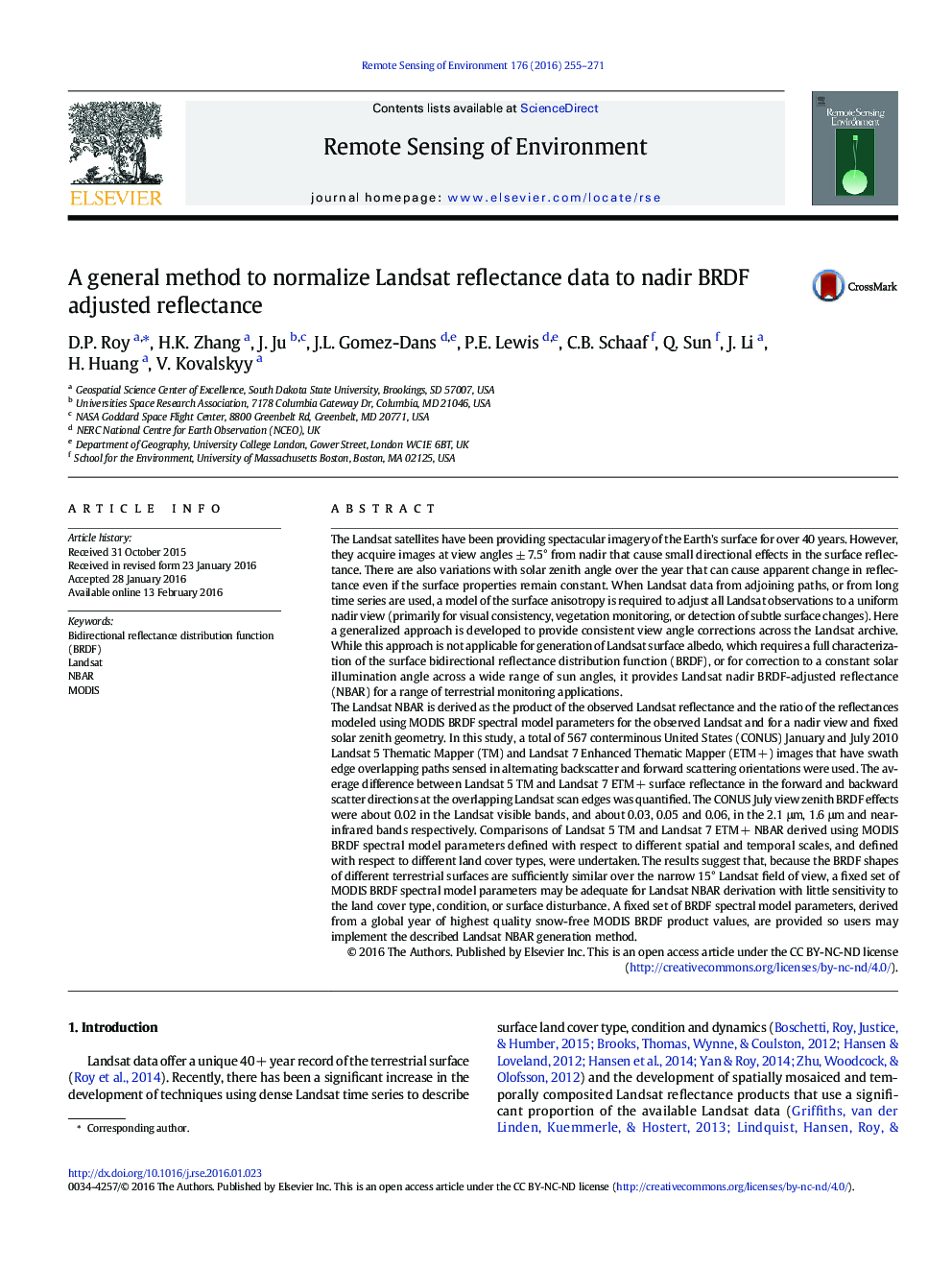| کد مقاله | کد نشریه | سال انتشار | مقاله انگلیسی | نسخه تمام متن |
|---|---|---|---|---|
| 6345359 | 1621224 | 2016 | 17 صفحه PDF | دانلود رایگان |

- Landsat NBAR derivation method developed using MODIS BRDF model parameters
- Based on BRDF shapes of terrestrial surfaces similar over Landsat field of view
- Fixed BRDF model parameters compared with local ones
- Global fixed parameters provided so users may implement the method
- Method insensitive to land cover and so is applicable to all Landsat record
The Landsat satellites have been providing spectacular imagery of the Earth's surface for over 40 years. However, they acquire images at view angles ± 7.5° from nadir that cause small directional effects in the surface reflectance. There are also variations with solar zenith angle over the year that can cause apparent change in reflectance even if the surface properties remain constant. When Landsat data from adjoining paths, or from long time series are used, a model of the surface anisotropy is required to adjust all Landsat observations to a uniform nadir view (primarily for visual consistency, vegetation monitoring, or detection of subtle surface changes). Here a generalized approach is developed to provide consistent view angle corrections across the Landsat archive. While this approach is not applicable for generation of Landsat surface albedo, which requires a full characterization of the surface bidirectional reflectance distribution function (BRDF), or for correction to a constant solar illumination angle across a wide range of sun angles, it provides Landsat nadir BRDF-adjusted reflectance (NBAR) for a range of terrestrial monitoring applications.The Landsat NBAR is derived as the product of the observed Landsat reflectance and the ratio of the reflectances modeled using MODIS BRDF spectral model parameters for the observed Landsat and for a nadir view and fixed solar zenith geometry. In this study, a total of 567 conterminous United States (CONUS) January and July 2010 Landsat 5 Thematic Mapper (TM) and Landsat 7 Enhanced Thematic Mapper (ETM +) images that have swath edge overlapping paths sensed in alternating backscatter and forward scattering orientations were used. The average difference between Landsat 5 TM and Landsat 7 ETM + surface reflectance in the forward and backward scatter directions at the overlapping Landsat scan edges was quantified. The CONUS July view zenith BRDF effects were about 0.02 in the Landsat visible bands, and about 0.03, 0.05 and 0.06, in the 2.1 μm, 1.6 μm and near-infrared bands respectively. Comparisons of Landsat 5 TM and Landsat 7 ETM + NBAR derived using MODIS BRDF spectral model parameters defined with respect to different spatial and temporal scales, and defined with respect to different land cover types, were undertaken. The results suggest that, because the BRDF shapes of different terrestrial surfaces are sufficiently similar over the narrow 15° Landsat field of view, a fixed set of MODIS BRDF spectral model parameters may be adequate for Landsat NBAR derivation with little sensitivity to the land cover type, condition, or surface disturbance. A fixed set of BRDF spectral model parameters, derived from a global year of highest quality snow-free MODIS BRDF product values, are provided so users may implement the described Landsat NBAR generation method.
Journal: Remote Sensing of Environment - Volume 176, April 2016, Pages 255-271